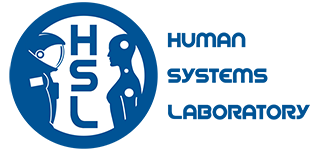| Title | Transient cardio-respiratory responses to visually induced tilt illusions |
| Publication Type | Journal Article |
| Year of Publication | 2000 |
| Authors | Wood, S. J., C. D. Ramsdell, T. J. Mullen, C. M. Oman, D. L. Harm, and W. H. Paloski |
| Journal | Brain Res Bull |
| Volume | 53 |
| Pagination | 25-31 |
| Date Published | Sep 1 |
| MVL Report Number | 00.33 |
| Keywords | *Cardiovascular Physiology, *Respiratory Physiology, Adult, Female, Human, Hypotension, Orthostatic/*physiopathology, Illusions/*physiology, Male, Middle Age, Orientation/physiology, Photic Stimulation/*adverse effects, Posture/*physiology, Reflex/physiology, Space Perception/physiology, Support, Non-U.S. Gov't, Syncope/physiopathology, Vestibule/*physiology |
| Abstract | Although the orthostatic cardio-respiratory response is primarily mediated by the baroreflex, studies have shown that vestibular cues also contribute in both humans and animals. We have demonstrated a visually mediated response to illusory tilt in some human subjects. Blood pressure, heart and respiration rate, and lung volume were monitored in 16 supine human subjects during two types of visual stimulation, and compared with responses to real passive whole body tilt from supine to head 80 degrees upright. Visual tilt stimuli consisted of either a static scene from an overhead mirror or constant velocity scene motion along different body axes generated by an ultra-wide dome projection system. Visual vertical cues were initially aligned with the longitudinal body axis. Subjective tilt and self-motion were reported verbally. Although significant changes in cardio-respiratory parameters to illusory tilts could not be demonstrated for the entire group, several subjects showed significant transient decreases in mean blood pressure resembling their initial response to passive head-up tilt. Changes in pulse pressure and a slight elevation in heart rate were noted. These transient responses are consistent with the hypothesis that visual-vestibular input contributes to the initial cardiovascular adjustment to a change in posture in humans. On average the static scene elicited perceived tilt without rotation. Dome scene pitch and yaw elicited perceived tilt and rotation, and dome roll motion elicited perceived rotation without tilt. A significant correlation between the magnitude of physiological and subjective reports could not be demonstrated. |
